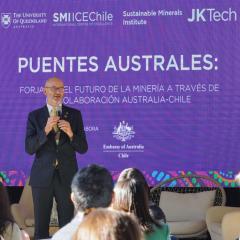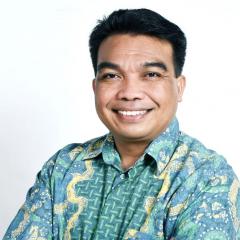
For the second year in a row, Sustainable Minerals Institute Research Fellow Juliana Segura-Salazar has won funding from Australia's Economic Accelerator (AEA) to advance research into using ore-sand to reduce and prevent mine waste and help alleviate pressure on natural sand supplies that are being depleted far faster than they can be replenished.
The world’s annual sand consumption is 12.5 million Olympic-sized swimming pools, making it the most globally sought-after solid. In many regions, natural sand is extracted at unsustainable rates for construction, but the mining industry also crushes and discards billions of tonnes of similar minerals as waste every year.
Research led by The University of Queensland and its collaborators has demonstrated that it is possible to solve these two problems at once by producing ore-sand, a sand manufactured from ore.
Dr Segura-Salazar explained that previous SMI research has shown almost half of global sand consumption takes place within 100 kilometres of a mine which could produce ore-sand as well as metals during processing.
“As ore-sand has already been crushed and ground, it can be produced with lower energy consumption and carbon footprint compared to conventional sands,” she said.
Dr Segura-Salazar and collaborators in the Global Centre for Mineral Security (GCMS) are working with mining industry stakeholders, governments, and construction companies to develop Ore-sand as a scalable circular economy solution.
Brazilian mining company Vale is already commercialising one million tonnes of Ore-sand annually. Researchers at The University of Queensland (UQ) have also run successful trials with a sandy material sourced from Newmont Corporation’s Cadia copper-gold mine in Australia, which is a coarser ore-sand, that doesn’t require as much blending with other aggregates.
“With the support of the 2024 AEA Seed grants, we proved that ore-sand can also be produced from more complex ore bodies and proved technical feasibility of OreSand in concrete and shotcrete (sprayed concrete),” Dr Segura-Salazar said,
“With the recently awarded AEA Ignite grant, we will focus on optimising production and the application of ore-sand in concrete and shotcrete, exploring its use in roadbuilding, benchmarking Ore-sand performance with manufactured sand, and determining the requirements for an Environmental Product Declaration in Australia.”
AEA Ignite funding announcement was $316,424, this added to the previous AEA Seed funding secured for the initiative ($180,000 from the Australian Government’s Department of Education and $50,000 from Newmont). Both AEA-funded projects include in-kind contributions from Newmont and Aurecon and involve researchers from UQ-SMI (Prof. Daniel Franks, Dr Juliana Segura-Salazar, Dr Lulit Habte Ekubatsion, Dr Christian Antonio) and UQ’s School of Civil Engineering (Professor Rebecca Gravina, A/Prof. Vinh Dao, Dr Mehdi Serati).
For more information on the ore-sand projects: https://smi.uq.edu.au/gcms/research/ore-sand-circular-economy-solution-reduce-mineral-wastes-and-improve-global-sand-sustainability



